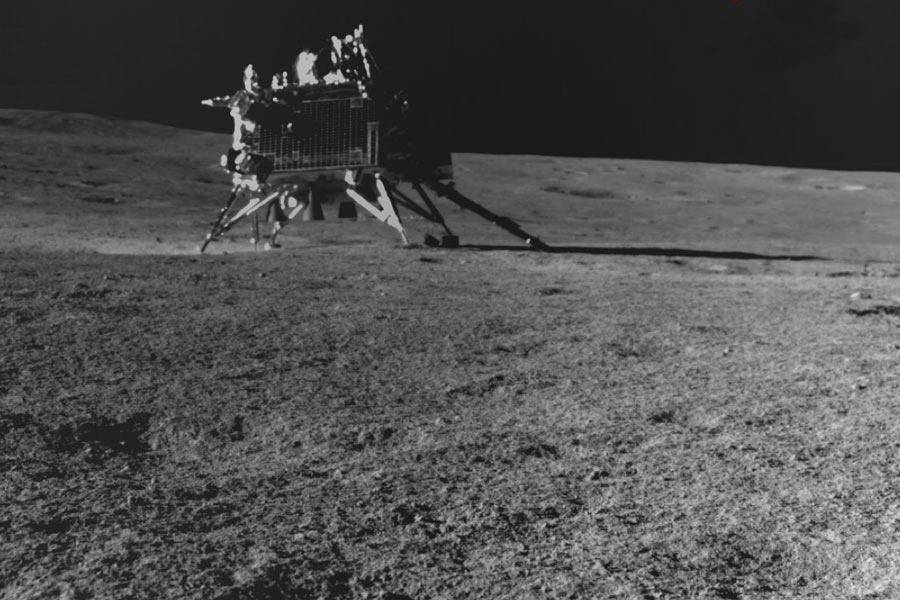The Chandrayaan-3 lander rose about 40cm above the lunar surface for a few seconds, moved slightly, and soft-landed again in an experiment early on Sunday to test a step critical for any sample return or human missions to the moon.
The lander has “exceeded its mission objectives” by successfully performing a “hop experiment,” the Indian Space Research Organisation (Isro) said on Monday, releasing a video and photographs before and after its hop from a camera on the lander.
“On command, (the lander) fired the (rocket) engines, elevated itself by about 40cm as expected and landed safely at a distance about 30 to 40 cm away,” Isro said, announcing the experiment on X, the social media platform formerly Twitter. “Importance?: This kick-start enthuses future sample return and human missions,” the space agency said.
Missions to bring back soil or rock samples -- or astronauts -- from the moon would be impossible without the capacity to fire rocket engines to enable a spacecraft to lift off from the lunar surface.
“There was an opportunity to do something extra,” Anil Bharadwaj, director of Isro’s Physical Research Laboratory (PRL), Ahmedabad, told The Telegraph. “When all scientific instruments on the lander and rover performed very well, the opportunity emerged to test the lander’s engines again.”
The “hop” was more than a hop. It required the lander’s rocket engines to fire again at the required thrust to lift the lander, while other mechanisms controlled its orientation for the second soft-landing.
Isro also said the lander was set into a “sleep mode” at around 8am IST Monday after three onboard instruments for studies of the lunar surface, geology, and near-surface environment were activated for observations at its new location. Isro had placed the robotic rover into sleep mode on Saturday after it had completed its assignments, including traveling a distance of 100m from the lander.
The Chandrayaan-3 lander-rover unit had soft-landed on the moon on August 23 with the mission’s primary technological objectives being to demonstrate a soft-landing on the lunar surface and getting the rover to roll out and explore the landing site’s neighbourhood.
Both the lander and the rover operate on power generated by solar panels and can function only during the lunar daytime — 14 Earth days. Mission planners had decided to put them to sleep as the lunar night approaches and wait and see whether they would survive the lunar night.
Temperatures in the landing area are expected to plummet to minus 220 degrees or even lower during the lunar night. Scientists say nobody knows whether the instruments on the lander and rover will wake up after exposure to such temperatures.
Isro said the lander’s battery is fully charged, its receivers are turned on, and its solar panel is oriented to receive light at the next sunrise expected on September 22. The lander will “fall asleep” next to the rover once its solar power is depleted and battery drained.










